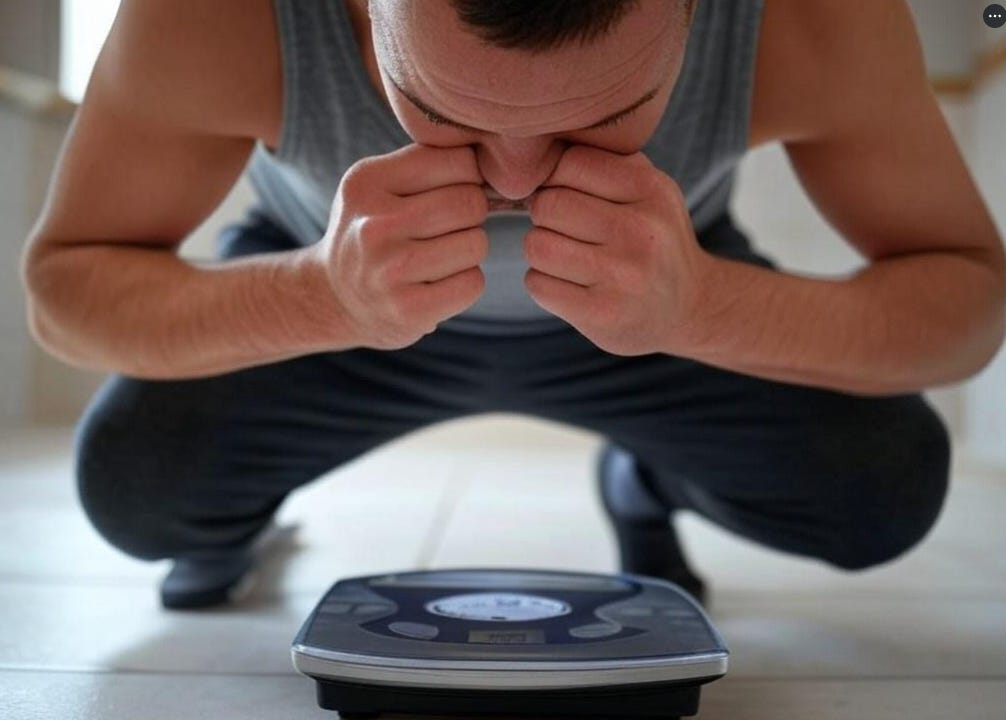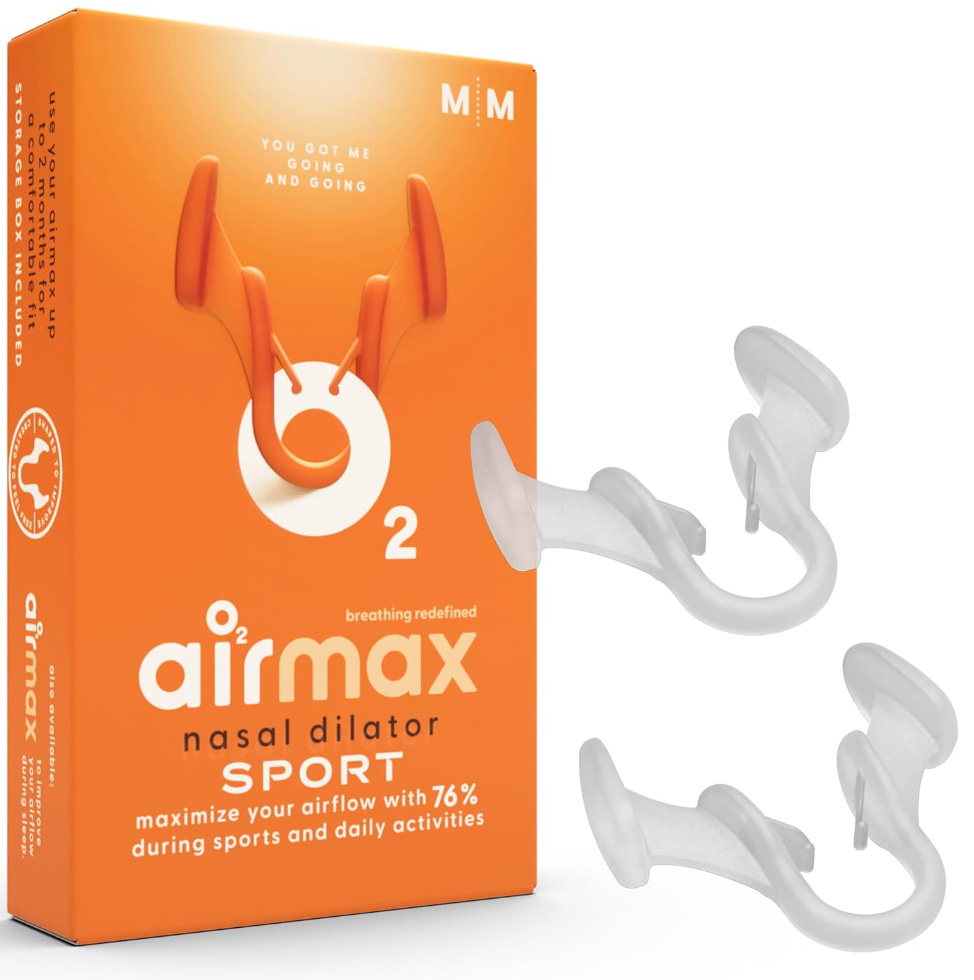The metabolism regulator you're literally doing wrong 20,000 times a day.
How you breathe can change your metabolic rate
Breathwork - that weird, slightly pretentious term that for some reason I have always grimaced at, might actually play a crucial role in metabolism and thus, weight loss.
You've probably heard of Wim Hof (which raises body oxygen) or Box Breathing (which lowers stress), but less likely have heard of the long studied Buteyko breathing which raises blood carbon dioxide via the nose (nasal breathing).
Several scientific studies have explored the link between different types of breathing and metabolism, and suggest that nasal breathing may have positive effects on metabolic rate and related physiological processes.
The cliff notes mechanism is that by raising CO2 tolerance and thus CO2 in the blood, you actually create a space for your body to use more oxygen and thus energy.
Impact on Resting Metabolic Rate
A recent study published in 2024 investigated the impact of nasal breathing on resting metabolic rate. The research suggests that nasal breathing plays a role in modulating resting metabolism, affecting energy expenditure and metabolic efficiency.
While the study is still ongoing, preliminary analysis indicates a possible link between nasal breathing and resting metabolic rate (RMR), emphasizing the overlooked role of nasal respiratory physiology in energy balance.
The tricky thing to point out here is that to easily breathe through your nose requires a low-inflammation state. Those suffering from obesity are typically in a high inflammation state and as such we would expect to see them with a lower rate of nasal breathing.
However - we also would expect for the most part someone suffering from obesity to have a suppressed but higher metabolic rate.
In this study they actually found a tight correlation between the increase in nasal breathing and metabolic rate which both changed after having surgery to fix their nasal passages. Cool Right!?
Oxygen Utilization and Fat Burning
Following on on what the mechanism described in the intro it’s then unsurprising to learn nasal breathing has been found to be more efficient than mouth breathing in terms of oxygen supply and utilization in the human body.
This increased efficiency can lead to:
Enhanced oxygen uptake: Nose breathing imposes approximately 50% more resistance to the airstream than mouth breathing, resulting in 10-20% more oxygen uptake.
Improved fat burning: The more oxygen our bodies use, the more fat we can potentially burn.
Fats are large molecules made up of oxygen, carbon, and hydrogen.
When the oxygen we breathe reaches these fat molecules, it breaks them down into carbon dioxide and water (fat oxidation).
The blood then picks up the carbon dioxide – a waste product of our bodies – and returns it to the lungs to be exhaled.
Metabolic Regulation and Weight Loss
Several mechanisms have been proposed for how nasal breathing might influence metabolism and weight loss:
Parasympathetic activation: Nasal breathing stimulates the parasympathetic nervous system, which is associated with better metabolic regulation and fat-burning processes.
Nitric oxide production: The nose is a reservoir for nitric oxide, an essential gas that plays a central role in dilating airways and improving oxygen transfer.
Improved sleep quality: Nasal breathing can reduce the risk of sleep apnea and snoring, leading to better sleep patterns. Quality sleep is vital for weight management and metabolic regulation.
Enhanced exercise efficiency: Better oxygenation through nasal breathing can lead to more energy and stamina during workouts, potentially contributing to more effective weight loss efforts.
Physiological Effects
A study on the effects of different nostril breathing patterns showed interesting metabolic changes:
Right nostril breathing led to a significant 37% increase in baseline oxygen consumption.
Left nostril breathing resulted in a 24% increase in baseline oxygen consumption.
Alternate nostril breathing caused an 18% increase.
These changes suggest that controlled nasal breathing techniques can influence metabolic rates.
While these studies provide intriguing evidence for a connection between nasal breathing and metabolism, it's important to note that more research is needed to fully understand the mechanisms.
My Anecdotes
As an amateur competitive cyclist who lives a mile above sea level (20% less oxygen) who does one competition every year at even higher altitudes with even lower oxygen, the idea that a change in my breathing patterns at rest and when I exercise could increase my performance is really compelling.
The amateur part means that in an 80/20 world, I've already picked up my newbie gains, and it is increasingly difficult for me to find the time to become more productive on the bike.
And so in no scientific way at all I have implemented the steps detailed below and have found that I can do workouts that previously would've had me gasping for air on my bike in training.
I can successfully breathe through my nose the whole way through intervals and feel that I also physically recover much quicker.
The steps taken and the performance gains found seem to compound.
I've since found that I mouth-breathe during sleep much less and as such my quality of sleep goes up (we’ll discuss HIF-1 and why this happens another time).
Ways to implement
I'm not going to give you an Andrew Huberman super complex protocol.
That's going to stress you out every single day. I'm going to break this down into two really simple things you can do.
Firstly, you can test your existing carbon dioxide tolerance by doing the test below.
I would recommend that you do it a couple times over a few days, average the result and write it down then test this every month or every year etc to see if you are making progress.
(Note that the results will vary at different altitudes - mine is double at sea level compared to Denver)
Test
When you are casually walking somewhere (not rushing), follow your breath, but after an exhale hold your breath and continue walking.
Count how many steps you can take before you physically need to gasp for air.
Test done. Don't repeat the test immediately after having done the test. You'll need a couple of minutes to recover, even if it doesn’t feel like it.
Ways to increase nasal breathing
Easy Buteyko breathing
There are entire courses you can take to get good at Buteyko breathing. I don't want to recommend that to you.
Fundamentally, I would recommend trying this 6 minute video
and then getting used to doing a control pause
every now and then, where if you're waiting for an Uber or if you're waiting for a flight or if you're in bed waiting for your partner to join, go ahead and try one.
Nose widgets
I have a bunch of these lying around the house, and I wear one when I'm in the sauna, when I'm exercising, when I'm walking the dog, or if I'm doing a hike. If I, for some reason, feel exceptionally out of breath or mouthy, then I'll wear one during the day too.
Plus the other parents at my kids’ daycare think I have a nose ring somedays so they’ll know not to mess with my kid.
Want help?
Struggling to navigate all the diet tribes, but just want to feel great again? We help people decipher their own energy & weight loss with DNA testing, experimentation and extremely easy to follow hyper personalized plans - come check it out at Patchwork.
We promise there’s no cardio or calorie counting required.





